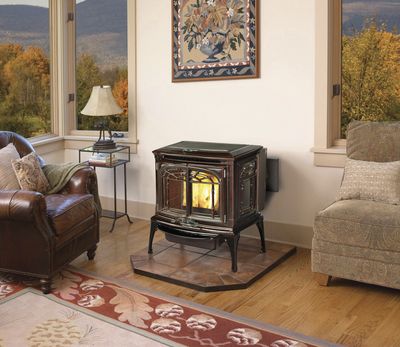Unlike old wood stoves known to pollute, today’s sought-after models burn much cleaner

During the last hike in heating costs in the late 1970s, interest in heating with wood surged, particularly in regions where oil or electricity were primary heat sources.
Ten years later, as clouds of wood smoke hung over many New England towns and Western cities on cold winter days, wood stoves were considered major polluters, and many people stopped buying them.
But the newest editions burn much cleaner than your grandmothers’ stoves, and that’s rekindling consumer interest.
“There is a fundamental difference between new stoves and old stoves and most of the culture doesn’t know that,” says John Crouch of the Hearth Patio and Barbecue Association (HPBA).
Today, retailers like Mountain Home Center in Truckee, Calif., say they are seeing a resurgence of interest in wood heating and wood stoves.
According to data from HPBA, shipments of wood stoves and inserts were up 54 percent, and pellet stoves and inserts up were up 212 percent in the first six months of 2008 over the same period in 2007.
Compared to older stoves, EPA certified devices are more sophisticated, often using blowers and catalytic converters to reduce the number of particulates released into the air.
Pellet stoves cost between $3,500 to $4,000, and there is a $300 tax credit for the purchase of a 75 percent efficient wood or pellet burning stove in 2009.
In Libby, Mont., one of several communities participating in a pilot project sponsored by the EPA and other partners to exchange older stoves for more efficient models, pollution from wood stoves was reduced by 28 percent in 2007, the first year following completion of the changeouts. Indoor air quality improved by 72 percent.
EPA certified stoves operate at 60 and 80 percent efficiency levels releasing only 2.7 micrograms of particulates per hour compared to 30 to 50 micrograms per house for pre-1992 stoves. They can burn wood, gas or alternative fuels such as wood pellets.
In addition to freestanding models, they can also be inserts into existing fireplaces.